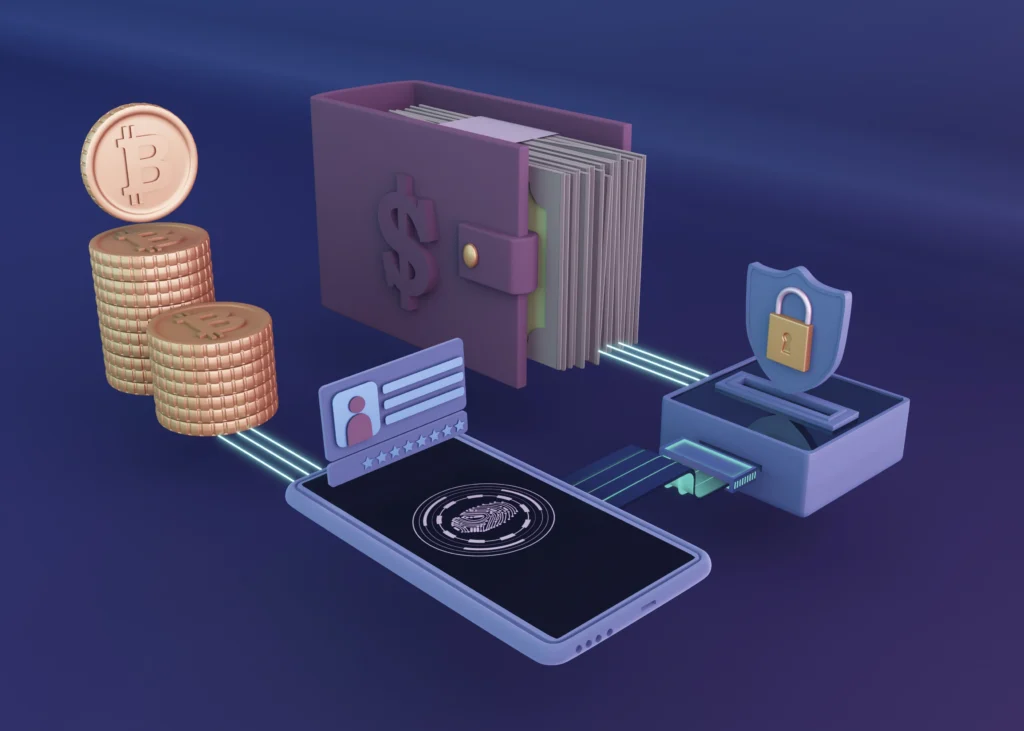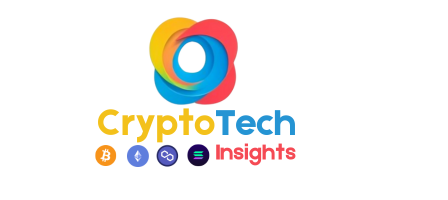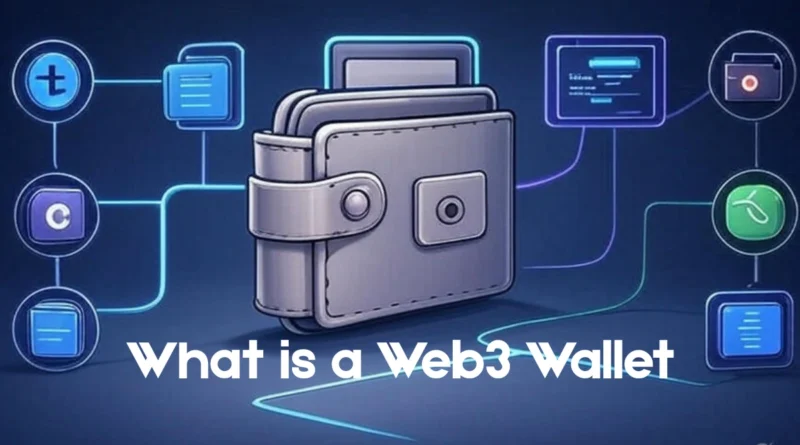What is a Web3 Wallet? Your Guide to the Decentralized World
When I first got into Web3, around early 2024, I recall feeling overwhelmed by the buzzwords. Blockchain, dApps, NFTs… and then there was this thing called a Web3 wallet. I’d see it mentioned everywhere, but it took me a while to grasp what it meant. Now, after diving deep into the space, I can tell you it’s your key to the decentralized internet. Whether you’re trading crypto, buying digital art, or exploring new apps that don’t need a middleman, a Web3 wallet is your starting point. I’m here to break it down for you, from the basics to the nitty-gritty, so that you can navigate Web3 with confidence.
Table of Contents
Defining a Web3 Wallet
A Web3 wallet is a digital tool that lets you store, manage, and use blockchain assets like cryptocurrencies (think Bitcoin or Ethereum) and NFTs (digital collectables). It’s your interface to the decentralized web, giving you direct access to blockchain networks and apps—known as dApps—that operate without centralised control. It acts as a gateway, offering full ownership and control over your digital assets. Unlike a bank account, where a company holds your money, a Web3 wallet puts you in charge using a public key (your address for receiving funds) and a private key (your secret code to access and manage them).
To put this into perspective, consider a traditional wallet. It holds your cash, cards, and ID, right? A Web3 wallet does the same, but for the digital world. Instead of dollar bills, you’ve got crypto tokens. Instead of a driver’s license, you’ve got a digital identity tied to your keys. And instead of swiping a card at a store, you’re signing transactions on the blockchain. The big difference? There’s no bank or third party involved—you’re in full control, which is both empowering and a bit daunting if you’re new to this.

Why Web3 Wallets Matter
If you’re curious about crypto, DeFi, or NFTs, a Web3 wallet is non-negotiable. It’s not just a place to store your assets—it’s how you interact with the decentralized world. These wallets embody Web3’s core principles: decentralization (no middleman), privacy (you control your data), and trustlessness (you don’t need to rely on anyone else). From my own journey in Web3, I’ve seen how they unlock a range of possibilities, from trading tokens to proving your digital identity without sharing personal info.
Here’s a quick scenario to show why they matter. Imagine you’ve got some Ethereum and want to try decentralized finance (DeFi). You hear about Aave, a platform where you can lend your ETH to earn interest, say, 5% annually. To do that, you need a Web3 wallet to connect to Aave, deposit your ETH, and start earning. Or maybe you’re into NFTs and spot a cool digital artwork on OpenSea. With a Web3 wallet, you can buy it in seconds, owning a unique piece of art on the blockchain. It’s like having both a bank account and a passport—it holds your funds, your access, and your digital presence, all in one.
Types of Web3 Wallets: Know Your Options
Web3 wallets come in different forms, each with its own strengths and trade-offs. I’ve explored a bunch of them, and here’s the breakdown based on what I’ve learned.
Non-Custodial Wallets: Full Control
Non-custodial wallets like MetaMask or Trust Wallet give you complete control over your private keys. It’s like keeping your money in a safe at home—no one else has access. They’re ideal if you value independence and want to interact with dApps frequently. For example, I’ve used MetaMask to swap tokens on Uniswap, and it’s seamless for that. The downside? If you lose your private key or seed phrase (a 12-24 word recovery code), there’s no way to get your assets back. Forgetting your password can mean losing access forever, which I’ve seen happen to others.
Custodial Wallets: Simpler, but Trust Required
Custodial wallets, like those offered by Coinbase or Binance, let a third party hold your keys. It’s more like a traditional bank account—you get ease of use and password recovery options, but you’re trusting someone else with your assets. They’re great for beginners who want a familiar setup. For instance, if you’re just buying Bitcoin to hold, Coinbase’s wallet is straightforward. But if the platform gets hacked or freezes your account, you could lose access. I’ve noticed Web3 veterans often steer clear of these for that reason.
Hot vs. Cold Wallets: Convenience or Security
Hot wallets are online, making them convenient for quick actions like trading or using dApps. MetaMask, for example, runs in your browser, so you can connect to a DeFi app in seconds. But being online makes them more vulnerable to hacks—I’ve heard of people losing thousands to phishing scams targeting hot wallets. Cold wallets, like Ledger Nano X or Trezor, are offline, often in the form of hardware devices. They’re the safest option for long-term storage, especially if you’re holding a lot of crypto. I’d use a cold wallet for storing large amounts of ETH, but for daily trades, a hot wallet is more practical.
Advanced Options: Smart Contract and MPC Wallets
Smart contract wallets, like Safe or Argent, use blockchain code to add features. For example, they can let you recover your account through trusted contacts if you lose your key—a lifesaver if you’re forgetful. Multi-Party Computation (MPC) wallets, like Zengo, split your private key into shares across devices, reducing the risk of a single point of failure. These are more complex, but they’re gaining traction for their innovation. I’ve seen them used by early adopters who want extra security without sacrificing usability.
| Wallet Type | Control | Ease of Use | Security | Best For |
|---|---|---|---|---|
| Non-Custodial | Full | Moderate | High (if managed well) | Experienced users, DeFi enthusiasts |
| Custodial | Limited | High | Moderate | Beginners, casual users |
| Hot Wallet | Varies | High | Moderate | Frequent transactions, dApp use |
| Cold Wallet | Full | Low | High | Long-term storage, high-value assets |
| Smart Contract/MPC | Full/Advanced | Low | High | Tech-savvy, early adopters |
How a Web3 Wallet Works
A Web3 wallet uses cryptography to secure your assets. You’ve got a public key—your address for receiving funds, like a digital mailbox—and a private key, which signs transactions to prove you’re the owner. The wallet is derived from your public key, and you use your private key to authorize actions, kind of like a digital signature for the blockchain.
Your assets don’t actually live in the wallet—they’re on the blockchain. The wallet is just the keyholder, which is why keeping your private key safe is critical: lose it, and you lose access. I’ve seen people accidentally leak their keys and lose everything, so it’s a real risk.
Let’s walk through a transaction. Say you want to buy an NFT on OpenSea. You connect your wallet (like MetaMask), select the NFT, and confirm the purchase. Your wallet uses your private key to sign the transaction, which is then broadcast to the Ethereum blockchain. Miners verify it, and once it’s confirmed, the NFT is yours, recorded on the blockchain. The whole process takes a few seconds, and you never have to share personal info—just your public key.
What You Can Do with a Web3 Wallet
A Web3 wallet is your gateway to the decentralized world. Here’s a deeper look at what I’ve seen it enable:
- Crypto Transactions: Send, receive, or swap tokens on platforms like Uniswap, where you can trade ETH for DAI without a middleman. You can also use Curve to exchange stablecoins like USDT for USDC with low fees.
- NFTs: Buy or mint digital collectibles on OpenSea or trade rare items on Rarible. I’ve seen people build entire collections this way.
- DeFi: Stake crypto on Aave to earn interest, lend on Compound, or borrow against your assets. You can also provide liquidity on Balancer to earn trading fees.
- Digital Identity: Log into dApps anonymously, like signing into a decentralized social platform like Lens Protocol, where your wallet acts as your ID.
- Gaming: Access blockchain games like Axie Infinity to earn crypto while playing, or The Sandbox to buy virtual land.
- Governance: Use your wallet to vote on proposals in decentralised organisations (DAOs) like MakerDAO, which manages the DAI stablecoin.
These wallets are key for managing a new breed of digital assets, tying you to a broader ecosystem with every action. Let’s look at a typical user—say, Alex, a 25-year-old graphic designer. Alex uses MetaMask to buy an NFT on OpenSea for $50 worth of ETH, then stakes some DAI on Aave to earn 4% interest. Later, they vote on a DAO proposal using Snapshot, all from the same wallet. It’s a seamless way to engage with Web3, from art to finance to community.
Security: Protecting Your Assets
Security is critical with Web3 wallets. Since you’re in control, you’re also the security team. If you don’t understand how wallets work, you’re taking a big risk. Keeping your private key secure is non-negotiable—losing it means losing your assets.
Here’s an expanded checklist to lock things down:
- Back Up Your Seed Phrase: Write it down on paper, store it in a secure location, and never screenshot or store it digitally.
- Use Cold Storage: For big holdings, get a hardware wallet like Ledger or Trezor to keep your keys offline.
- Avoid Phishing: Don’t click sketchy links or share your keys. Always double-check URLs before connecting your wallet.
- Enable 2FA: If your wallet supports two-factor authentication, turn it on for extra protection.
- Use a Dedicated Device: For high-value transactions, use a device that’s dedicated solely to crypto, with no random browsing.
- Monitor Activity: Regularly check your wallet for unauthorised transactions, especially if you use hot wallets.
Common mistakes to avoid include:
- Sharing Your Seed Phrase: Never give it to anyone, even if they claim to be support staff.
- Using Public Wi-Fi: It’s a hacker’s playground—stick to secure networks for transactions.
- Ignoring Updates: Keep your wallet software updated to patch security vulnerabilities.
- Falling for Scams: If a deal looks too good to be true (e.g., “double your ETH” schemes), it’s a scam.
I’ve seen people lose their funds by making these mistakes, so taking security seriously is a must.
Choosing the Right Web3 Wallet
Picking a wallet depends on your goals. Here’s a more detailed guide based on what I’ve figured out:
| Goal | Wallet | Why |
|---|---|---|
| Easy Start | Coinbase, Trust Wallet | User-friendly, forgiving for newbies |
| dApp Integration | MetaMask | Seamless with most dApps, browser-based |
| High Security | Ledger Nano X, Trezor | Offline storage, hack-resistant |
| Advanced Features | Argent, Zengo | Smart contracts, recovery options |
To choose wisely, consider these criteria:
- Experience Level: Beginners should start with custodial wallets for simplicity; advanced users might prefer non-custodial for control.
- Usage Frequency: If you’re trading daily, a hot wallet like MetaMask is convenient. For long-term holding, go cold with Ledger.
- Asset Value: Small amounts can stay in a hot wallet; large sums should be in cold storage.
- Feature Needs: Need recovery options? Look into smart contract wallets. Want multi-device security? Try an MPC wallet.
New to Web3? Start with Coinbase. Into DeFi or NFTs? MetaMask is solid. Holding big crypto? Go cold with Ledger.

Getting Started with a Web3 Wallet
Ready to dive in? Here’s a step-by-step guide to set up your first Web3 wallet, based on my own experience:
- Choose a Wallet: For beginners, I’d recommend Trust Wallet—it’s mobile-friendly and easy to use.
- Download and Install: Get the app from the official website or app store. Avoid third-party sources to steer clear of scams.
- Create a New Wallet: Open the app and select “Create a New Wallet.” You’ll be given a seed phrase—write it down on paper and store it somewhere safe.
- Set a Password: Add a strong password for extra security. Don’t reuse passwords from other accounts.
- Fund Your Wallet: Buy some crypto (like ETH) on an exchange like Coinbase, then transfer it to your wallet’s public address.
- Connect to a dApp: Try a simple action, like browsing NFTs on OpenSea. Connect your wallet, and you’re ready to explore.
- Secure Your Setup: Double-check your seed phrase backup, and consider getting a hardware wallet if you plan to hold more crypto.
It’s a straightforward process, but take your time with the security steps—they’ll save you headaches later.
The Future of Web3 Wallets
Web3 wallets are evolving fast, and I’ve noticed some exciting trends. Smart contract wallets are adding features like social recovery, so you can regain access through trusted contacts if you lose your key. MPC wallets are simplifying self-custody by splitting keys across devices. A Web3 wallet can be seen as your key to a digital vault, your ID card to enter dApps, and your signature to approve blockchain actions.
Looking ahead, I expect wallets to integrate with more blockchains—cross-chain functionality is becoming a big deal, letting you manage assets on Ethereum, Solana, and beyond in one place. AI could also play a role, with wallets suggesting DeFi opportunities or flagging suspicious transactions. Security will improve too, with biometric authentication (like fingerprint or face ID) becoming standard. The goal? Making Web3 accessible to everyone while keeping its decentralised ethos intact.
Wrapping Up: Your Web3 Journey Starts Here
A Web3 wallet is your entry to the decentralised internet—managing crypto, accessing dApps, and owning your digital identity. Let’s recap the key points:
- It’s a tool for storing and managing blockchain assets, giving you control without middlemen.
- Types include non-custodial (full control), custodial (easier but less secure), hot (convenient), cold (secure), and advanced options like smart contract wallets.
- Use it for crypto trades, NFTs, DeFi, gaming, and more, with security as your top priority.
- The future looks bright, with smarter, more accessible wallets on the horizon.
From MetaMask for dApps to Ledger for security, there’s a wallet for every need. Keep those keys safe, and you’re set to explore Web3. Got a wallet you love or a tip to share? Drop a comment or find me on X—I’d love to hear your take and swap ideas on navigating this space!
Frequently Asked Questions (FAQs) About Web3 Wallets
-
What is a Web3 wallet?
A Web3 wallet is a digital tool that lets you store, manage, and interact with blockchain-based assets like cryptocurrencies and NFTs. It serves as your entry point to decentralised applications (dApps) and gives you full control over your assets using cryptographic keys.
-
How does a Web3 wallet work?
A Web3 wallet operates with a public key (your address) to receive assets and a private key to sign transactions and verify ownership. Your assets live on the blockchain, not in the wallet itself—the wallet just holds the keys to access and manage them.
-
What are the different types of Web3 wallets?
There are several types:
1. Non-custodial wallets: You control the keys.
2. Custodial wallets: A third party holds the keys.
3. Hot wallets: Online and convenient.
4. Cold wallets: Offline and secure.
5. Advanced options like smart contracts and MPC wallets offer extra features and security. -
What can I do with a Web3 wallet?
You can:
1. Trade cryptocurrencies.
2. Buy and sell NFTs.
3. Engage in decentralised finance (DeFi) like staking or lending.
4. Play blockchain-based games.
5. Use it as a digital identity to log into dApps. -
How do I choose the right Web3 wallet?
It depends on your needs:
1. Beginners may prefer custodial wallets for simplicity.
2. Experienced users might choose non-custodial wallets for control.
3. For security, go with a cold wallet; for frequent use, a hot wallet works best. -
What are the security risks of using a Web3 wallet?
Key risks include:
1. Losing your private key or seed phrase.
2. Phishing attacks.
3. Using a compromised device.
To stay safe, back up your seed phrase offline, use secure networks, and enable two-factor authentication when available. -
What is the difference between a hot wallet and a cold wallet?
Hot wallet: Online, great for quick transactions, but more hackable.
Cold wallet: Offline, ideal for long-term storage with higher security. -
Can I recover my Web3 wallet if I lose my private key?
Usually, losing your private key means losing your assets forever, especially with non-custodial wallets. Some advanced wallets, like smart contract wallets, offer recovery through trusted contacts.
-
How do I set up a Web3 wallet?
Steps:
1. Pick a provider (e.g., MetaMask, Phantom or Trust Wallet).
2. Download the app or browser extension.
3. Create a new wallet.
4. Securely back up your seed phrase.
5. Fund it with crypto from an exchange or another wallet. -
What is the future of Web3 wallets?
Expect features like:
1. Cross-chain support.
2. AI-enhanced security.
3. Biometric authentication.
4. User-friendly designs to bring decentralisation to more people.

